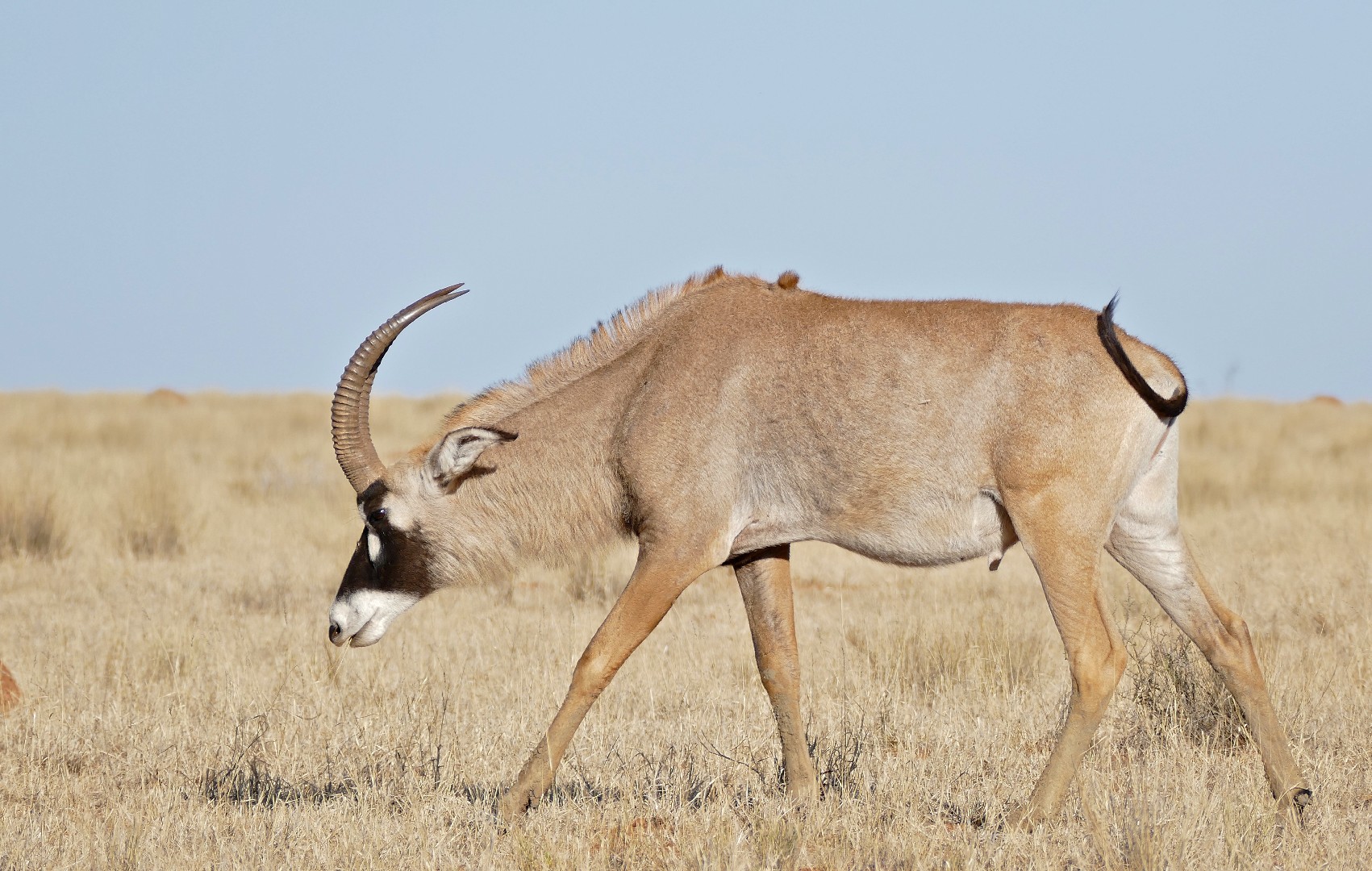Roan antelope
A species of Hippotragus, Also known as Southern roan antelope Scientific name : Hippotragus equinus Genus : Hippotragus
Roan antelope, A species of Hippotragus
Also known as:
Southern roan antelope
Scientific name: Hippotragus equinus
Genus: Hippotragus
Content
Description General Info
 Photo By Bernard DUPONT , used under CC-BY-SA-2.0 /Cropped and compressed from original
Photo By Bernard DUPONT , used under CC-BY-SA-2.0 /Cropped and compressed from original Description
The roan antelope is a large antelope with a horse-like build. It is the largest antelope in the genus Hippotragus. The roan antelope stands 135–160 centimetres (53–63 in) at the shoulder, and weighs 230–320 kilograms (510–710 lb). The head-and-body length is typically between 235 and 285 centimetres (93 and 112 in). The dark tail, terminating in a black tuft, measures 54 centimetres (21 in). Characteristic features include a short and erect mane of greyish brown hair extending from the back of the neck along the midline of the back up to the rump, white patches around the eyes and the mouth on the otherwise black face, and long, narrow ears with 3–5 centimetres (1.2–2.0 in) long tufts. The long legs are supported by large hooves and false hooves. The short, smooth coat is brown to amber. The ventral parts are yellow to white, while the neck and the mane are grey to black. The sable antelope is notably darker; it has a brownish black coat. 
General Info
Lifespan
18-20 years
Diet
Roan antelope's diet primarily consists of grasses and shrubs, displaying a preference for fresh, green plant material over dry, mature plants. Investigations reveal it also consumes tree leaves, bark, and fruits when required.
Appearance
Roan antelope is a large, robust mammal known for its muscular body covered in a coarse, short fur that ranges from chestnut-brown to dark brown. Its most defining feature is its long, slender, slightly curved back horns. Offspring are lighter in color, getting darker as they mature. The males of the species have thicker, more pronounced horns than the females.
Behavior
Roan antelope is a primarily diurnal species, grazing during morning and late afternoon hours. Highly territorial, males often mark their territories with dung middens. Noted for its social structure, roan antelope typically live in groups led by a dominant male. Unique to this species is the males' performance of a high-stepping prance during courtship.
Population
Decreasing